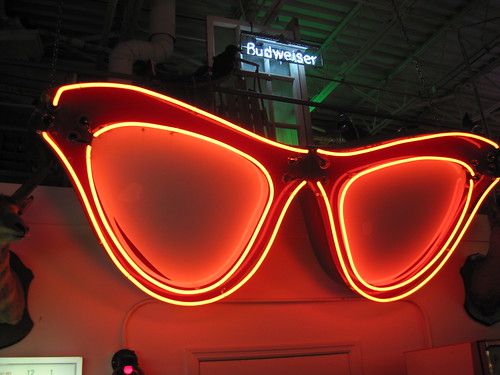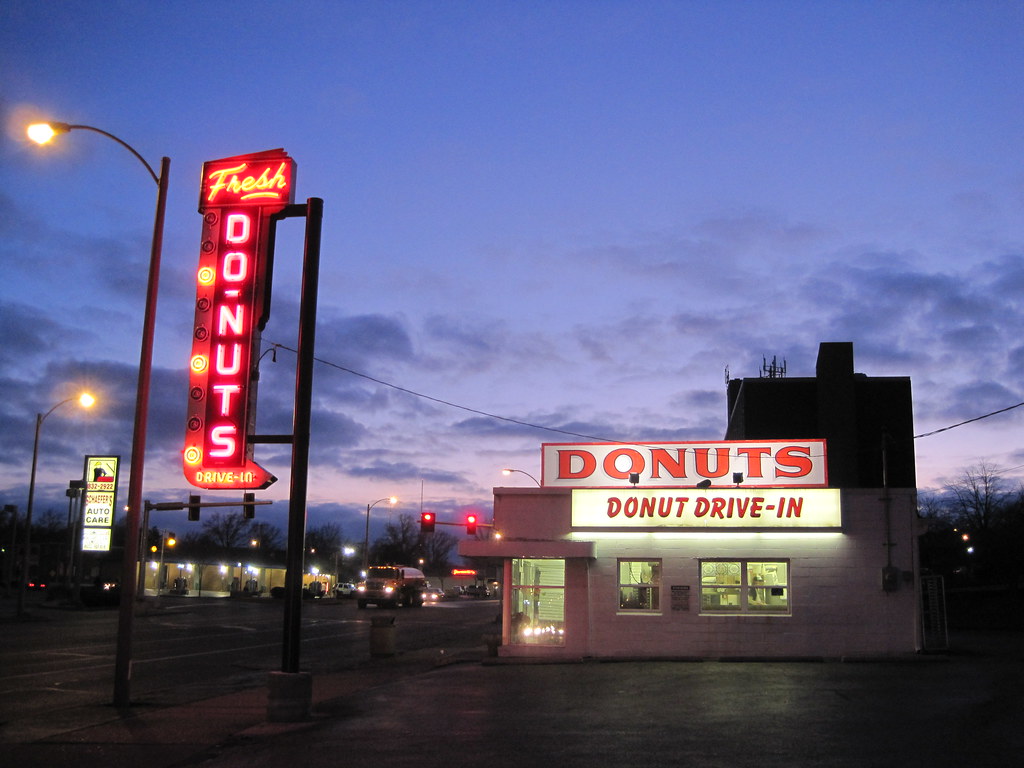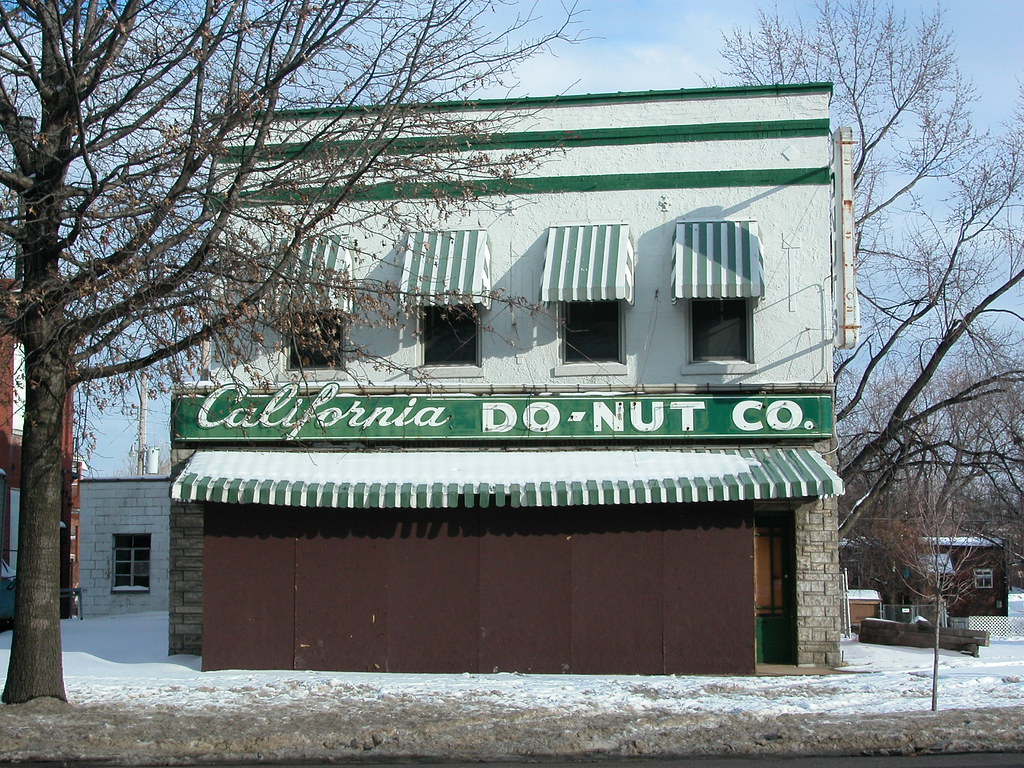There's a nice little article by David Witter in this week's
Newcity about the sad decline of neon signage in Chicago. Witter compares neon to Impressionist painting in the way that its colors change with changing natural light at different times of day, showing an appreciation of beauty in something that others might dismiss as outdated, garish, and rusty (Anyone wanna ask this guy to move to St. Louis, eh?). Also of particular note in the article is the list of the main reasons for the demise of neon in Chicago: general pressure against liquor stores, the city's preference for signs that lay flat against buildings (as opposed to free-standing signs), the sheer cost of creating and maintaining neon signs, and Chicago's brutal weather.
The article is online here:
The Death of Neon. For those of you in Chicago,
Newcity is also available for free in print in boxes and stacks in various locations around the city, which I mention because the print edition, unlike its online counterpart, has photos of the signs that the article describes.
•••
If you like neon and you're ever in Los Angeles, it's worth a trip to see
MONA, The Museum of Neon Art. Their collection includes contemporary neon art and old signs that they've salvaged and restored. While I enjoyed my entire visit to MONA when I went there during the summer of 2003, what I remember most vividly is the moment of walking into the back room where they display all the old, restored signs and hearing
nnNNNnnt! nnNNNnnt! nnNNNnnt! nnNNNnnt!
ZZZZZT! ZZZZZT! ZZZZZT!TCK-A! TCK-A! TCK-A! TCK-A! TCK-A!
...the wonderful cacophony of all the old signs buzzing and flashing on and off noisily, each one operating at a slightly different tempo. The signs themselves and the colorful light they cast on the white gallery walls all moved in time to the neon's strange, percussive song. I'm smiling now just thinking about it.
 Yes, the Lake Forest Pastry Shop sign is alive and well!
Yes, the Lake Forest Pastry Shop sign is alive and well!


 Yes, the Lake Forest Pastry Shop sign is alive and well!
Yes, the Lake Forest Pastry Shop sign is alive and well!


 The animated neon sign at the Donut Drive-In, 6525 Chippewa Avenue in Lindenwood Park, returned to life on November 1, 2008. Donut Drive-In first opened in 1952 on what was then Route 66, the nation's "Mother Road." Many of the St. Louis stretch's neon signs have disappeared, but not this one.
The animated neon sign at the Donut Drive-In, 6525 Chippewa Avenue in Lindenwood Park, returned to life on November 1, 2008. Donut Drive-In first opened in 1952 on what was then Route 66, the nation's "Mother Road." Many of the St. Louis stretch's neon signs have disappeared, but not this one. For decades, Harter's Hobby House at 1001 West Main in Belleville beckoned hobbyists with its colorful sign, which resembled a blue pin-striped stick of dynamite with a starlight mint-like pinwheel fuse. The sign is no more, having been replaced recently with a simple new sign.
For decades, Harter's Hobby House at 1001 West Main in Belleville beckoned hobbyists with its colorful sign, which resembled a blue pin-striped stick of dynamite with a starlight mint-like pinwheel fuse. The sign is no more, having been replaced recently with a simple new sign. The old sign was a complex metal sign with three plastic back-lit name boards, an enameled body and neon tubing on the pinwheel. The letters in the possessive "Harter's" were proper cursive fit for business, while the words "Hobby House" had a carefree lettering somewhere between kindergarten script and a typesetter's mistake.
The old sign was a complex metal sign with three plastic back-lit name boards, an enameled body and neon tubing on the pinwheel. The letters in the possessive "Harter's" were proper cursive fit for business, while the words "Hobby House" had a carefree lettering somewhere between kindergarten script and a typesetter's mistake. Yes, the much-mourned California Do-Nut Co. at 2924 S. Jefferson in Benton Park sports a storefront addition. The 1909 Sanborn fire insurance map shows the two-story building as a black smith shop, and building permits suggest that the addition dates to 1920. Here the addition seems to become part of a larger, mid-twentieth-century remodel. The parent building received a coat of stucco, the addition is clad in a Permastone-type material and the enameled neon sign board has an unmistakable modern swagger. The white and green color scheme is also sporty and simple, the hallmark of good mid-century design.
Yes, the much-mourned California Do-Nut Co. at 2924 S. Jefferson in Benton Park sports a storefront addition. The 1909 Sanborn fire insurance map shows the two-story building as a black smith shop, and building permits suggest that the addition dates to 1920. Here the addition seems to become part of a larger, mid-twentieth-century remodel. The parent building received a coat of stucco, the addition is clad in a Permastone-type material and the enameled neon sign board has an unmistakable modern swagger. The white and green color scheme is also sporty and simple, the hallmark of good mid-century design. 